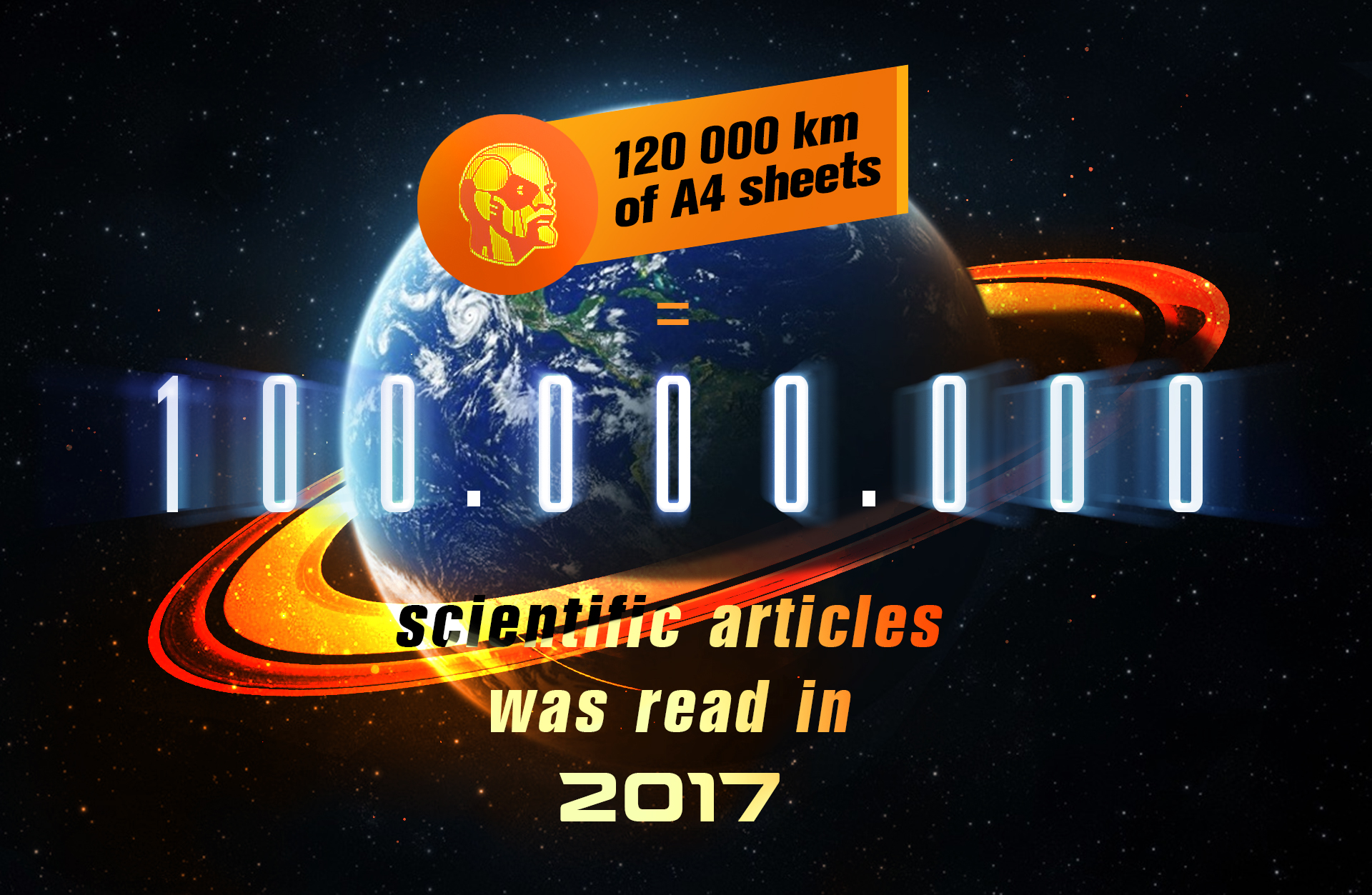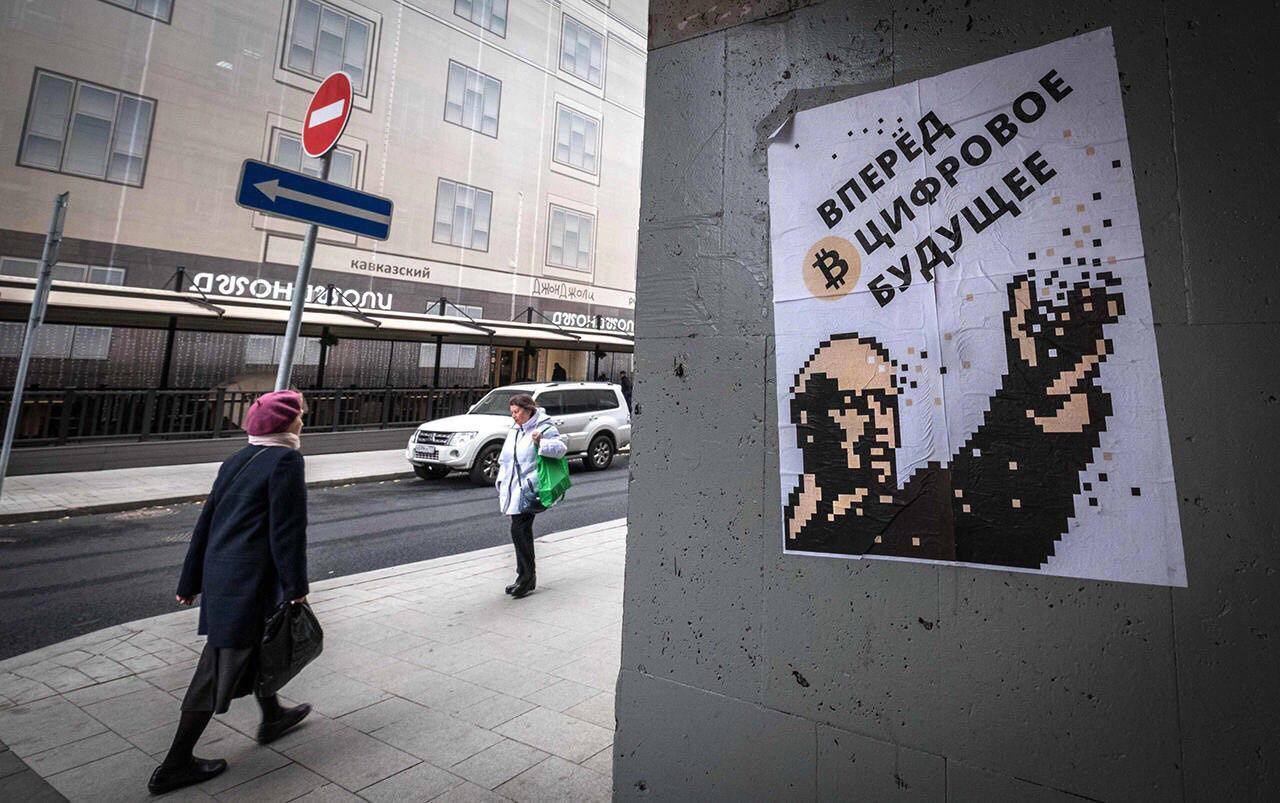
If you print all these papers on A4 sheets, you can wrap the Earth three times on the equator
The 2017 year ended up with the massive milestone for Russian consumers of scientific knowledge. They were read 100,000,000 papers on the noticeable European OA platform CyberLeninka. According to the project statistics, 30% of science in Russia has gone open access, which includes almost 1,500 scientific journals with more than 1,400,000 papers, most of which under Creative Commons license.
It became possible due to significant mind shift in the scientific community driven by the exemplum of Sci-Hub. According to Sci-Hub’s statistics, the project delivered 150,000,000 papers worldwide in 2017. Openness and universal accessibility provided certain speed, and convenience in work with scientific information and more and more people became fond of it.
Government assessment
In April 2017 the project was bestowed a government prize acknowledging its work. Deputy Prime Minister Arkady Dvorkovich and Minister Mikhail Abyzov have awarded the project developers. In the acceptance speech, CyberLeninka’s CEO Dmitry Semyachkin said that it is also necessary to ensure that the results of publicly funded research are publicly available and openly licensed. And in the long run, it will allow building a cyberinfrastructure that will provide the completeness of the data and guarantee continuous access to information for all citizens.
Funding
In the last three years, the project funding issue was particularly acute. The social project was not of interest to private investors and the state funds for development and innovation. But in August 2017 the ice broke. In Russia, a new life was given to the concept of impact-investment, and CyberLeninka received its first investment from businessman and philanthropist Igor Rybakov.
The horizon
The local consensus of community in Russia has led to the tremendous results but scaling it worldwide is a bit of a challenge. However, nowadays technology can ease up the task. In the year 2017 blockchain concept showed up various applications of acquiring consensus in the vast amount of industries. Building cyberinfrastructure based on blockchain can help to solve many challenges in modern scholarly communication. The most important thing that it will be possible to reduce transaction costs which will lead to openness and universal accessibility. Blockchain will also be able to help with digital rights management and address authorship credit and priority problem. Subsequent decentralization can help to adjust trust and transparency for the system and boost peer-review quality and speed, plagiarism detection, research evaluation and address reproducibility and publication bias issues. Blockchain platform can also give a new life to reuse of the non-publications and scientific data.

The revolution will not be televised
Further readings
- Poynder, Richard: The OA interviews: Mikhail Sergeev, Chief Strategy officer at Russia-based CyberLeninka (January 2016). http://www.richardpoynder.co.uk/CyberLeninka.pdf
- UNESCO: Open Educational Resources: Policy, Costs and Transformation. http://unesdoc.unesco.org/images/0024/002443/244365e.pdf
“An example of an initiative using open licensing of scientific and educational resources, undertaken after the amendments to the legislation, is the publication of full-text articles from dozens of scientific journals licensed under Creative Commons Attribution (CC-BY).” - Russian language journals now in Google Scholar Metrics: A Google Scholar & CyberLeninka cooperation. http://open-science.ru/2016/07/russian-language-journals-now-in-google-scholar-metrics-a-google-scholar-cyberleninka-cooperation.html
- Russia entered the top five European countries by the number of articles published in open access.
https://www.openaire.eu/which-country-ranks-highest-in-oa-publications-in-openaire